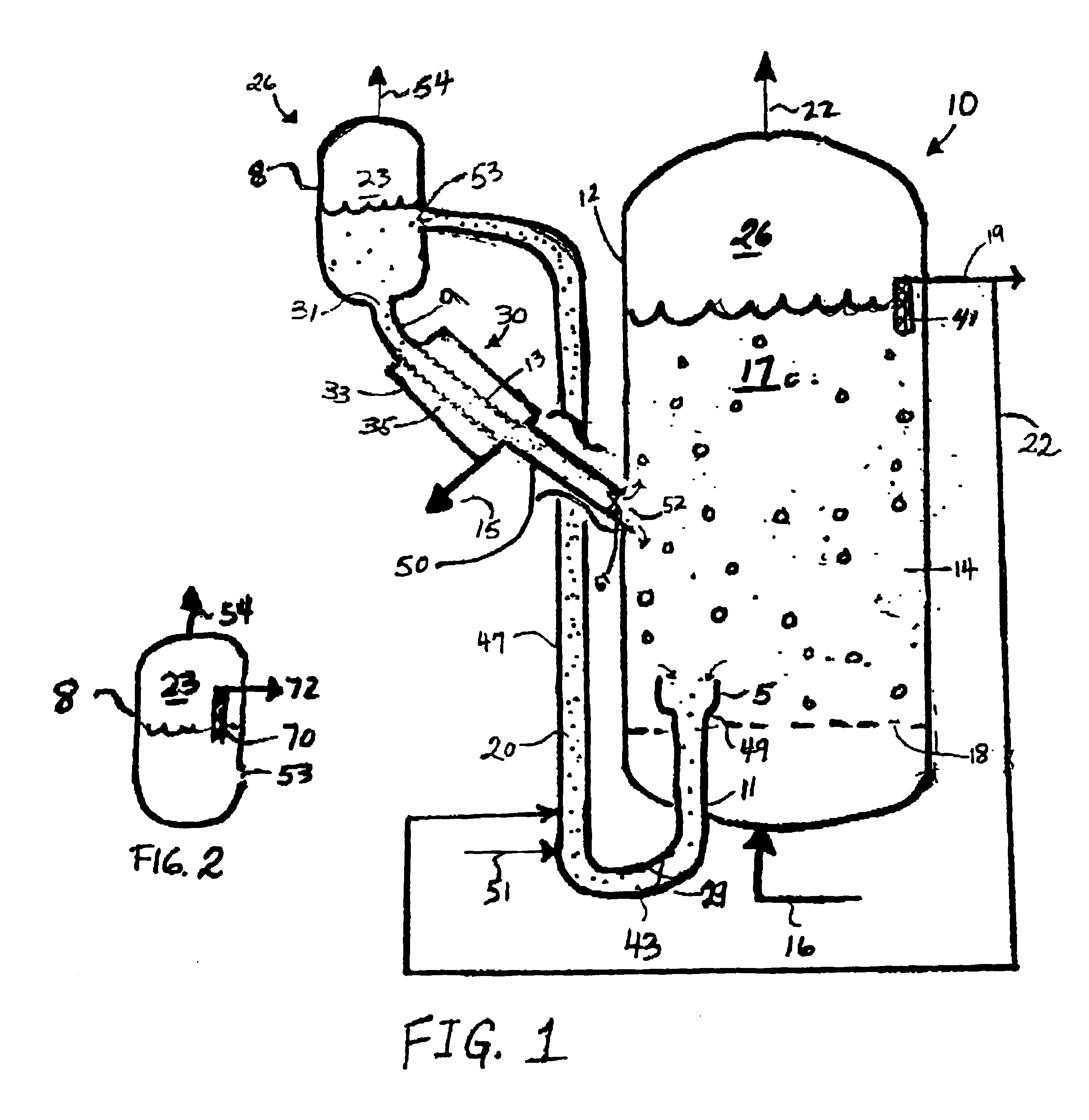Production of high purity fisher-tropsch wax
a high-purity, fisher-tropsch technology, applied in the direction of oxygen-containing compound preparation, organic chemistry, chemistry apparatus and processes, etc., can solve the problems of time-consuming and costly addition treatment, and achieve the effect of greater liquid throughpu
- Summary
- Abstract
- Description
- Claims
- Application Information
AI Technical Summary
Benefits of technology
Problems solved by technology
Method used
Image
Examples
example no.1
EXAMPLE NO. 1
Synthesis of the Fischer-Tropsch Wax External Continuous Hydrogen Treatment.
A mixture of hydrogen and carbon monoxide synthesis gas (H2:CO=2.1:1) was converted to heavy paraffins in the slurry bubble column reactor vessel of a multi vessel HCS unit with treatment means to remove catalyst de-activating species from circulating slurry similar that that disclosed by Hsia in U.S. Pat. No. 5,260,239. The catalyst utilized was a titania supported cobalt rhenium catalyst similar to that described in U.S. Pat. No. 4,568,663. The reaction was conducted at 210° C. and 18 bar. The feed was introduced at a linear velocity of 16.7 cm / sec. The CO conversion was 50 percent. Hydrogen was introduced at about 40 standard liters (15° C., 1 atm) per minute. The system provided a slurry conduit valve which was in a closed position, thus placing the reactor's external hydrogen treatment capabilities in a non-operative mode. Fischer-Tropsch wax from the reactor was withdrawn and analyzed. The...
PUM
| Property | Measurement | Unit |
|---|---|---|
| linear velocity | aaaaa | aaaaa |
| mole ratio | aaaaa | aaaaa |
| mean particle size | aaaaa | aaaaa |
Abstract
Description
Claims
Application Information
 Login to View More
Login to View More - R&D
- Intellectual Property
- Life Sciences
- Materials
- Tech Scout
- Unparalleled Data Quality
- Higher Quality Content
- 60% Fewer Hallucinations
Browse by: Latest US Patents, China's latest patents, Technical Efficacy Thesaurus, Application Domain, Technology Topic, Popular Technical Reports.
© 2025 PatSnap. All rights reserved.Legal|Privacy policy|Modern Slavery Act Transparency Statement|Sitemap|About US| Contact US: help@patsnap.com


